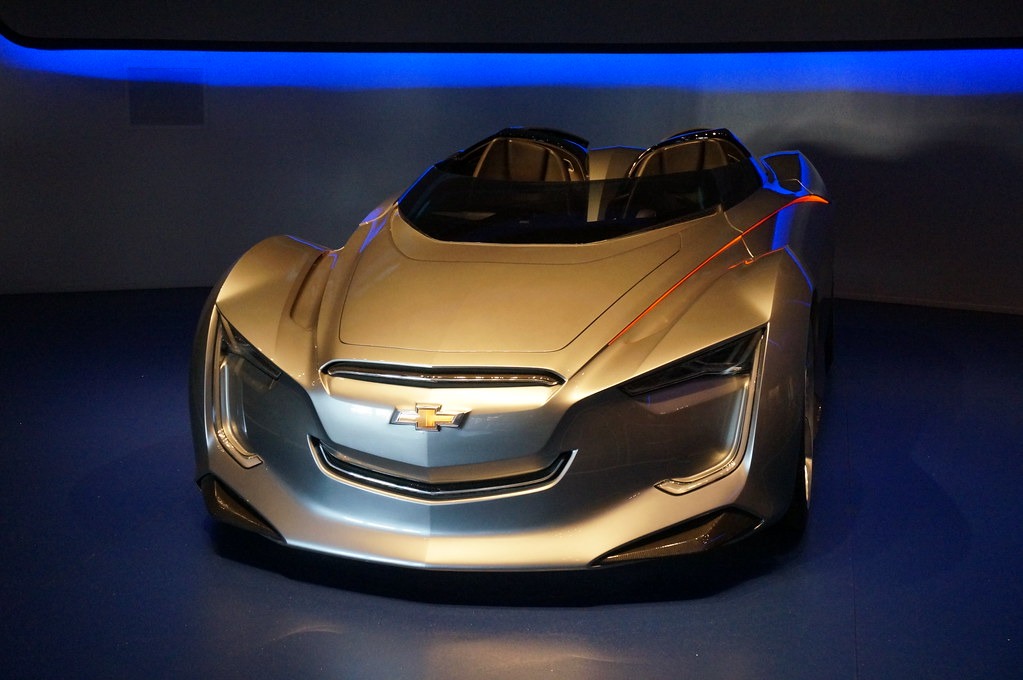Test Track has been a cornerstone attraction at Disney World’s Epcot Theme Park for the past 25 years. However, its journey to become one of the most popular rides at the park has been anything but smooth. From construction delays to major media production failures, and even a billion-dollar bailout, the history of Test Track is a fascinating tale of innovation, perseverance, and adaptation. Let’s take a deep dive into the evolution of this iconic attraction, from its humble beginnings as World of Motion to its current high-speed incarnation.
The information compiled from Test Track’s History comes directly from “For The Love of Theme Parks” on YouTube. If you’re looking for more stellar content from this creator, I highly suggest subscribing to them!
The Birth of Epcot and World of Motion (1982-1996)
When Walt Disney World began planning its next major Florida project in the late 1970s, the concept of a permanent World’s Fair emerged as the primary focus. This soon-to-be-named Epcot Center, while deviating from Walt Disney’s original vision of an experimental prototype community of tomorrow, would still hold true to the idea of an ever-changing showcase of the latest technology and education.
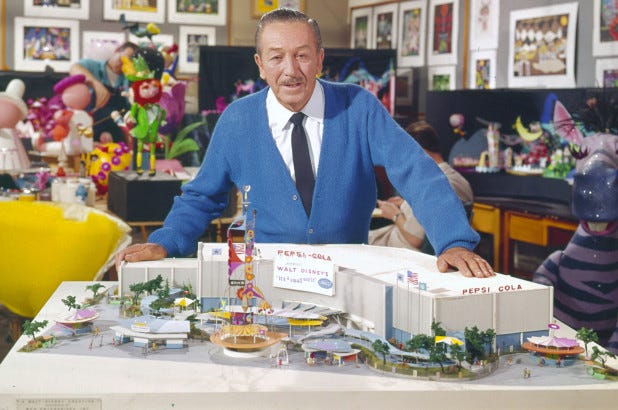
The park was divided into two main areas: World Showcase in the back, featuring pavilions representing various countries, and Future World in the front, dedicated to showcasing cutting-edge technology and innovation. This permanent World’s Fair concept not only provided a space for displaying the latest tech in places like the Communicore Pavilion but also allowed companies to invest in their own pavilions within the park.
General Motors, having seen the success that companies like General Electric and Ford had experienced at the 1964 World’s Fair with their sponsored attractions created by WED Enterprises (later renamed Walt Disney Imagineering), wanted to be part of this exciting new venture. They became the first sponsor to sign on for what was then known internally as the Transportation Pavilion.
Drawing inspiration from Ford’s Magic Skyway attraction at the 1964 World’s Fair, which took guests seated in Ford model cars on a journey through time, from prehistoric eras to the future, the Transportation Pavilion aimed to create a similar experience. However, instead of focusing on Earth’s history, the new attraction would showcase the history of transportation and its progression through the centuries.
Construction on World of Motion, as it came to be called, began in 1979 along with the rest of Epcot. When the park opened on October 1, 1982, World of Motion was among the first Future World pavilions to welcome guests, alongside The Land Pavilion, Universe of Energy, Spaceship Earth, Communicore East, Communicore West, and the Imagination Pavilion (although the Journey into Imagination ride itself wouldn’t open until March of the following year).
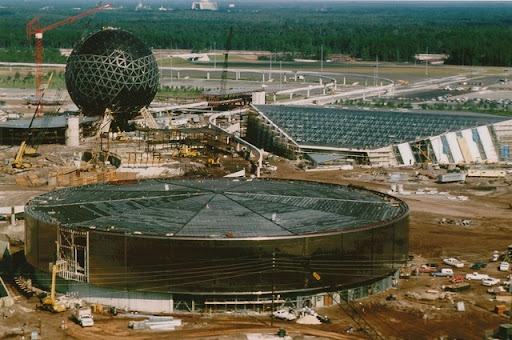
World of Motion utilized a tiered omnimover vehicle system, similar to the one still found on the Imagination pavilion today. Guests entered through an open-air entrance, ascended a spiral ramp, and found themselves on the second floor of the show building. What set World of Motion apart from its Magic Skyway predecessor was its heavy use of comedic elements. Almost every scene incorporated physical comedy in some way, from depictions of the invention of the wheel (where various shapes were presented before landing on the round shape) to a very impatient Mona Lisa as Leonardo da Vinci took a paint break to work on his flying machine.
Perhaps the most iconic scene from the ride was the world’s first traffic jam, featuring an impressive number of audio-animatronics. While the exact count is debated online (ranging from 139 to 188), World of Motion still holds the record for the most animatronics in a single theme park attraction, more than doubling almost every runner-up.
To accompany this whimsical journey through transportation history, a memorable soundtrack was needed. While the Sherman Brothers were often the go-to composers for Disney attractions in the ’50s and ’60s, World of Motion’s music was created by another legendary Disney music team: composer Buddy Baker and lyricist X Atencio, known for their work on Pirates of the Caribbean and Haunted Mansion. They composed “It’s Fun to Be Free,” a light-hearted tune that, much like “It’s a Small World,” changed in tone and genre as the ride vehicles moved from room to room.
The ride concluded with a glimpse into the future of transportation, featuring a 3D model of a city called CenterCore – a translucent, glowing metropolis modeled after Walt’s original vision for EPCOT. Upon exiting the ride, guests entered the TransCenter, a large showroom filled with exhibits and shows about transportation, as well as some of the latest vehicles from General Motors’ fleet.
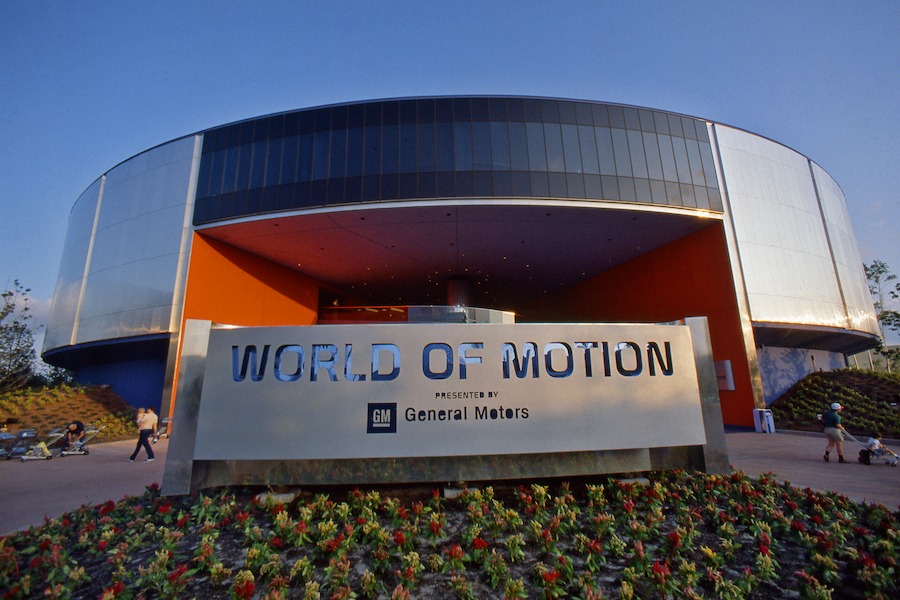
World of Motion operated for 13 years, closing on January 2, 1996, to make way for a new, more thrilling attraction that would help usher Epcot into the 21st century.
The Conception and Development of Test Track (1996-1999)
As World of Motion approached its final days, Disney and General Motors were already hard at work on its replacement. In November 1995, Disney announced the upcoming arrival of Test Track, promising a behind-the-scenes look at the never-before-seen world of automobile design and testing. This new attraction would allow guests to experience firsthand the safety and engineering processes of modern automobiles, complete with the illusion of high-speed travel.
Test Track represented a significant departure from the slow-moving, educational dark rides that had dominated Epcot’s Future World. This shift towards a more thrilling experience was a huge step for the park, making Test Track only the second true thrill ride at Epcot, following the motion simulator attraction Body Wars in the Wonders of Life pavilion.
The transformation from World of Motion to Test Track required extensive changes to the building’s layout, both inside and out. The entire World of Motion building, including most of the interior walls, was gutted to accommodate the new track layout. Additionally, while World of Motion had been confined to the building, Test Track would feature an outdoor portion of the track, which actually began construction before World of Motion even closed.
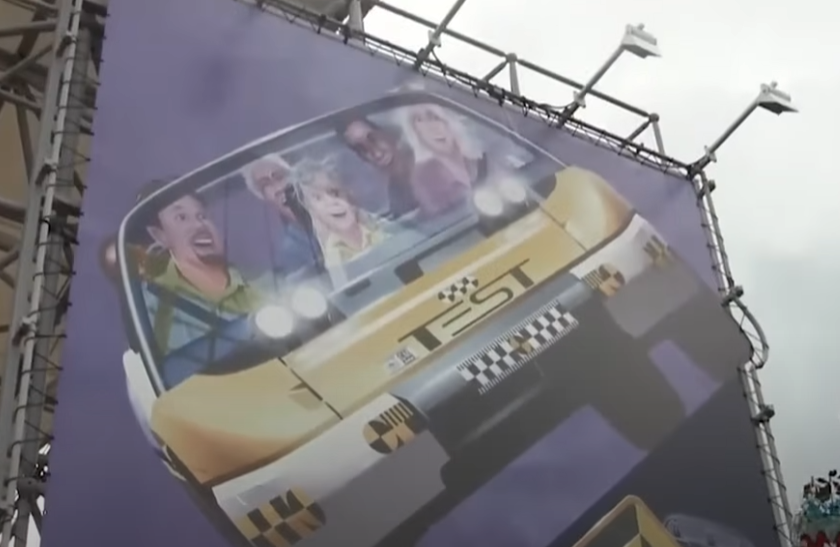
The development of Test Track was not without its challenges. The originally planned opening date of May 1997 had to be pushed back numerous times due to various issues, nearly doubling the construction timeline. One of the first problems imagineers encountered was with the tires used on the test vehicles. Standard tires couldn’t withstand the demands of the ride track, which was designed to simulate extreme testing conditions. While real-world test vehicles might only run through a few tests a day, each Test Track car would complete hundreds of laps daily, totaling 140 miles per day and racking up to 50,000 miles in a year.
To solve this problem, Disney commissioned Goodyear to create special tires for the attraction with extra thickness of rubber built in to withstand the extreme wear and tear. Another significant issue arose with the ride’s computer system. To run at its highest hourly capacity, Test Track needed 29 vehicles on the track simultaneously. However, the initial computer system could only handle a maximum of six cars at once. After frequent software crashes, the original program was scrapped, and a new system had to be built from the ground up, causing the ride’s opening to be delayed by another year.
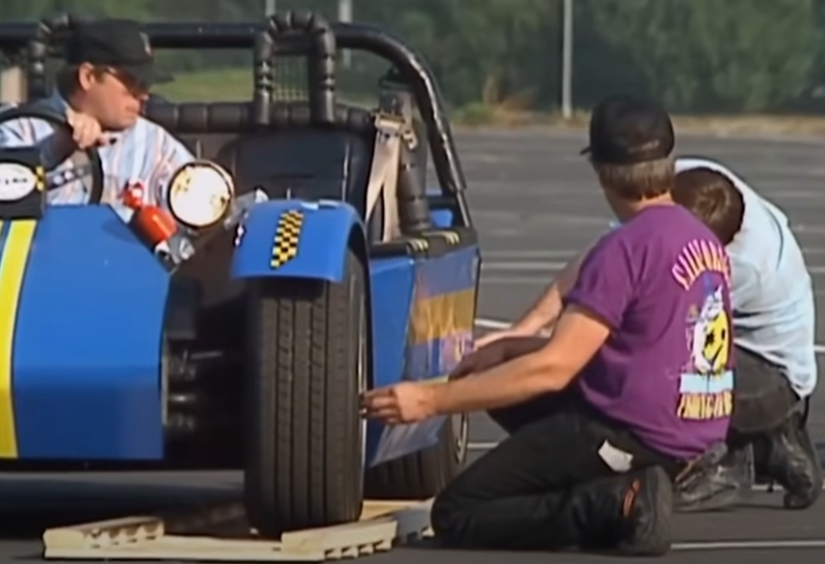
Despite these setbacks, Test Track finally began technical rehearsals (also known as a soft opening) in December 1998, with the ride officially opening to the public on March 17, 1999. The wait had been long, but the result was a groundbreaking attraction that would set new standards for thrill rides at Disney parks.
The Original Test Track Experience (1999-2012)
When guests first approached the newly opened Test Track, they were greeted by the now-iconic Test Track sign and a massive canopy that had been added to provide shade for the extended outdoor queue. This area was also where visitors might encounter the Test Track mascots: Fletch and Lumpy, a pair of sentient crash test dummies. These characters were Disney’s own creation, distinct from the crash test dummy characters Larry and Vince who appeared in General Motors’ public service announcements on national TV around the same time.
Upon entering the building, guests found themselves in an environment designed to resemble a GM factory and testing facility. The massive warehouse-like space was adorned with an eclectic mix of automotive paraphernalia, from vintage cars to smashed vehicles, stacks of tires, toolboxes, and more test dummies. The industrial atmosphere was further enhanced by the ride’s soundtrack, a pulsing, energetic beat that set the tone for the high-octane experience to come.
The queue area told the story of vehicle testing and safety throughout history, maintaining the educational aspect that Epcot was known for while shifting the focus from the broader history of transportation to the specific realm of automotive development and safety. Before boarding the ride, guests entered a pre-show briefing room where they received a debriefing on the tests they were about to experience.
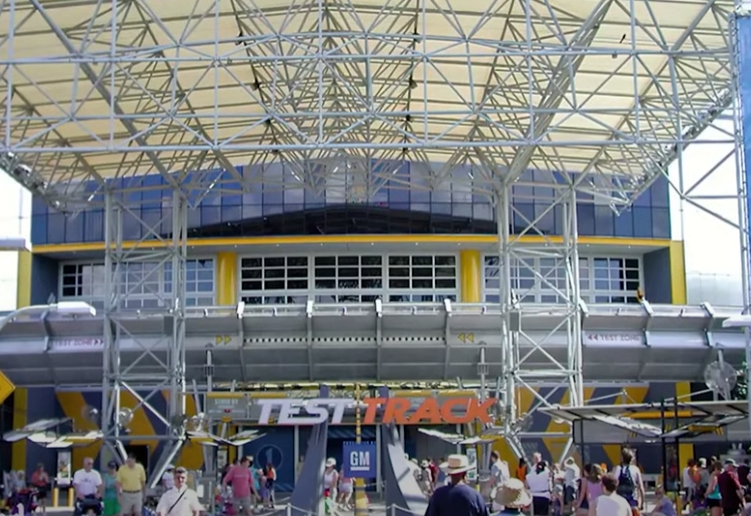
This pre-show featured two test engineers, Sherry and Bill, explaining the ride while monitors on either side displayed a digitally animated version of the attraction. Interestingly, the character of Bill was portrayed by actor John Michael Higgins, known for his roles in various films and TV shows. In interviews, Higgins has shared the challenging nature of filming this pre-show, which required delivering seven minutes of complex technical dialogue in a single take. Even more remarkably, due to unforeseen audio issues, Higgins had to return a year later to completely re-dub his entire performance, matching his lip movements from the original shoot.
After the briefing, guests proceeded to the loading platform where they boarded the six-seater test vehicles. These cars were a significant departure from the omnimover vehicles used in World of Motion. While the cars appeared to drive on a roadway, they were actually connected to a hidden track beneath the surface, much like a roller coaster.
Once the ride began, guests experienced a series of tests designed to simulate the rigorous evaluation process that GM vehicles undergo. The first test, the Accelerated Hill Climb, cleverly incorporated the need to reach the second floor of the building (a remnant of the World of Motion layout) into the ride narrative. This was followed by rough road and brake tests, giving riders their first taste of the attraction’s more thrilling elements.
One of the most memorable segments was the extreme temperature testing rooms. Riders were first subjected to the heat of 216 lamps for about 8 seconds, followed immediately by a drive through a freezing cold area, creating a jarring contrast that left a lasting impression on many guests.
After passing through a corrosion test room, riders experienced the handling test, a winding hill climb that simulated a high-speed chase through a national park. This section featured sharp turns, road signs, trees, and guardrails, culminating in a near-miss moment with a semi-truck – a surprising element that wasn’t heavily featured in promotional materials, allowing it to remain a genuine surprise for many first-time riders.
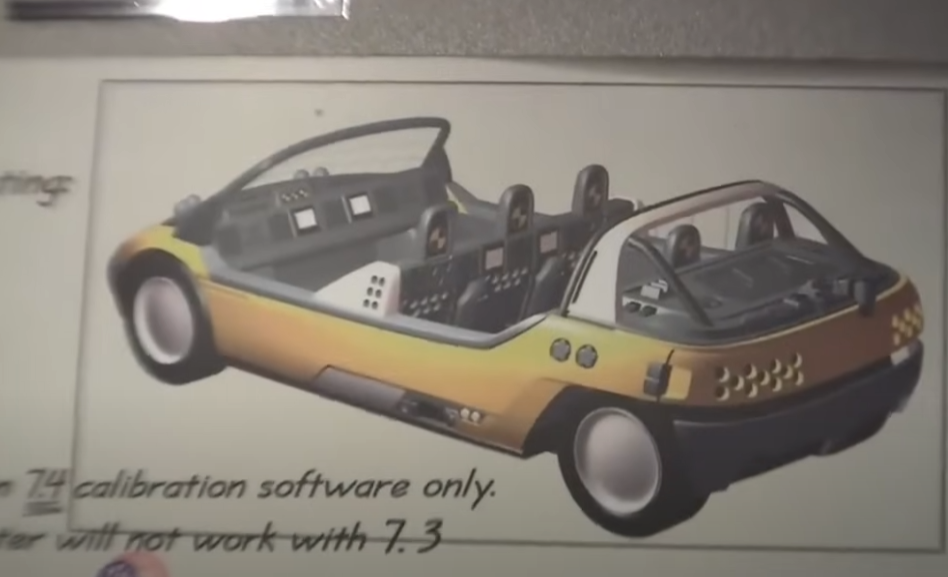
The grand finale of the ride was the barrier test, teased in the pre-show video. As the vehicle sped toward what appeared to be a solid wall, many guests (especially younger ones) felt a moment of genuine fear. At the last second, the wall would split open, transitioning riders smoothly into the high-speed test. This final portion of the ride took place on an elevated outdoor track, reaching speeds of up to 65 miles per hour – the fastest of any Disney World attraction, a record it still holds today.
After the ride, guests entered the Assembly Experience, a walkthrough attraction that simulated being on the floor of a vast automotive assembly plant. The exit area also featured the “Cool Wash,” a Coca-Cola sponsored cooling station where guests could refresh themselves after their high-speed adventure.
This original version of Test Track, often referred to as Test Track 1.0, operated for 13 years – coincidentally, the same lifespan as its predecessor, World of Motion. On April 15, 2012, the ride closed for a major refurbishment and re-theming, marking the end of an era and the beginning of a new chapter in the attraction’s history.
The Reimagining: Test Track 2.0 (2012-2024)
The closure of the original Test Track in 2012 marked the beginning of a significant reimagining of the attraction. This update coincided with some major changes for General Motors, the ride’s long-time sponsor. The 2008 financial crisis had hit the automotive industry hard, and GM, along with other American car manufacturers, faced the prospect of bankruptcy. The U.S. government stepped in with a bailout plan, providing GM with a reported $7 billion loan to keep the company afloat.
Given these financial difficulties, many assumed that GM would end its sponsorship of the attraction. However, in a surprising move, Chevrolet, a subsidiary of General Motors, took over as the ride’s sponsor. This decision allowed GM to maintain its presence at Epcot while potentially shifting some of the financial burden to one of its brands.
The reimagined Test Track, which reopened on December 6, 2012, maintained the same basic ride system and track layout as its predecessor. However, the theming and storyline underwent a dramatic overhaul. Gone was the industrial, real-world testing facility aesthetic, replaced by a sleek, futuristic design clearly inspired by the TRON franchise (which Disney had acquired the rights to in 2010).
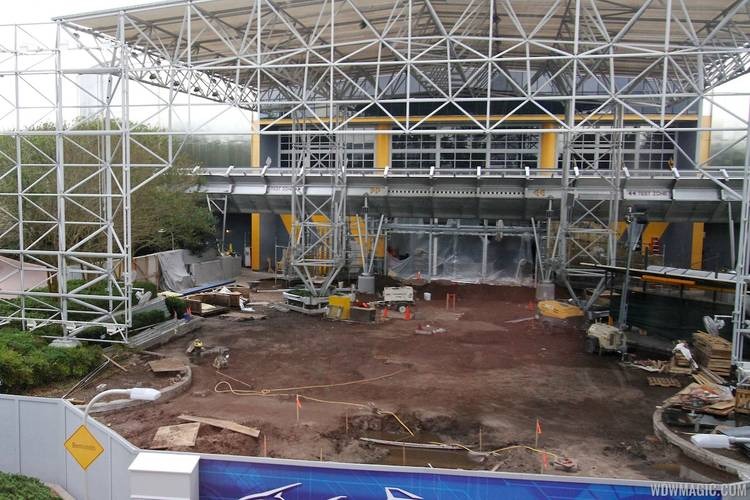
In this new version, guests were no longer cast in the role of crash test dummies. Instead, they became automotive designers, creating their own concept vehicles. The queue area was completely redesigned, replacing the old props with prototypes of futuristic cars and interactive elements. Video screens showed Chevrolet team members asking children what their dream car would look like, setting the stage for the interactive design experience to come.
The pre-show area now featured an immersive, interactive experience where guests could customize their own Chevrolet concept vehicle. Using touch screen kiosks, visitors could adjust various aspects of their car, including its shape, wheel size, color, and decals. These design choices weren’t just cosmetic – they affected four key performance attributes: capability, efficiency, responsiveness, and power.
Once guests had completed their designs, they could scan their park ticket or MagicBand to save their concept vehicle. This information would then be used during the ride itself, allowing guests to see how their designs performed against those of other riders in their vehicle.
The ride experience itself, now referred to as the “SimTrack,” maintained the same basic structure as the original Test Track. However, the various tests were reframed to fit the new design-focused narrative. For example, the extreme weather tests were replaced by a segment where cars were scanned for “optimal eco-efficiency,” complete with a Pepper’s Ghost effect on adjacent mirrors.
Throughout the ride, various Easter eggs paid homage to the attraction’s history. Observant riders could spot references to World of Motion, including a model of the futuristic city “CenterCore” from the original ride, and street signs bearing significant numbers and phrases from World of Motion’s past.
The post-ride area was also updated to fit the new theme. Interactive stations allowed guests to put their sim car designs through additional tests, and there were several photo opportunities that placed riders in different digital environments. The showroom at the exit continued to display the latest Chevrolet vehicles, with representatives on hand to discuss specs and even allow guests to sit inside the cars.
The Impact of Test Track on Epcot and Disney World
Test Track’s introduction in 1999 marked a significant shift in Epcot’s attraction lineup. As the park’s first high-speed thrill ride, it helped to diversify Epcot’s offerings and appeal to a broader range of visitors. The ride’s popularity demonstrated that educational content could be successfully combined with thrilling experiences, paving the way for future attractions that would blend entertainment with Epcot’s traditional focus on innovation and discovery.
The ride’s speed record – reaching up to 65 miles per hour – gave Disney World a new selling point. As the fastest attraction at any Disney park worldwide, Test Track became a must-do for thrill-seekers and a significant draw for Epcot. This helped to change the perception of Epcot as a park primarily for adults or those interested in educational experiences, positioning it as a destination with something for everyone.
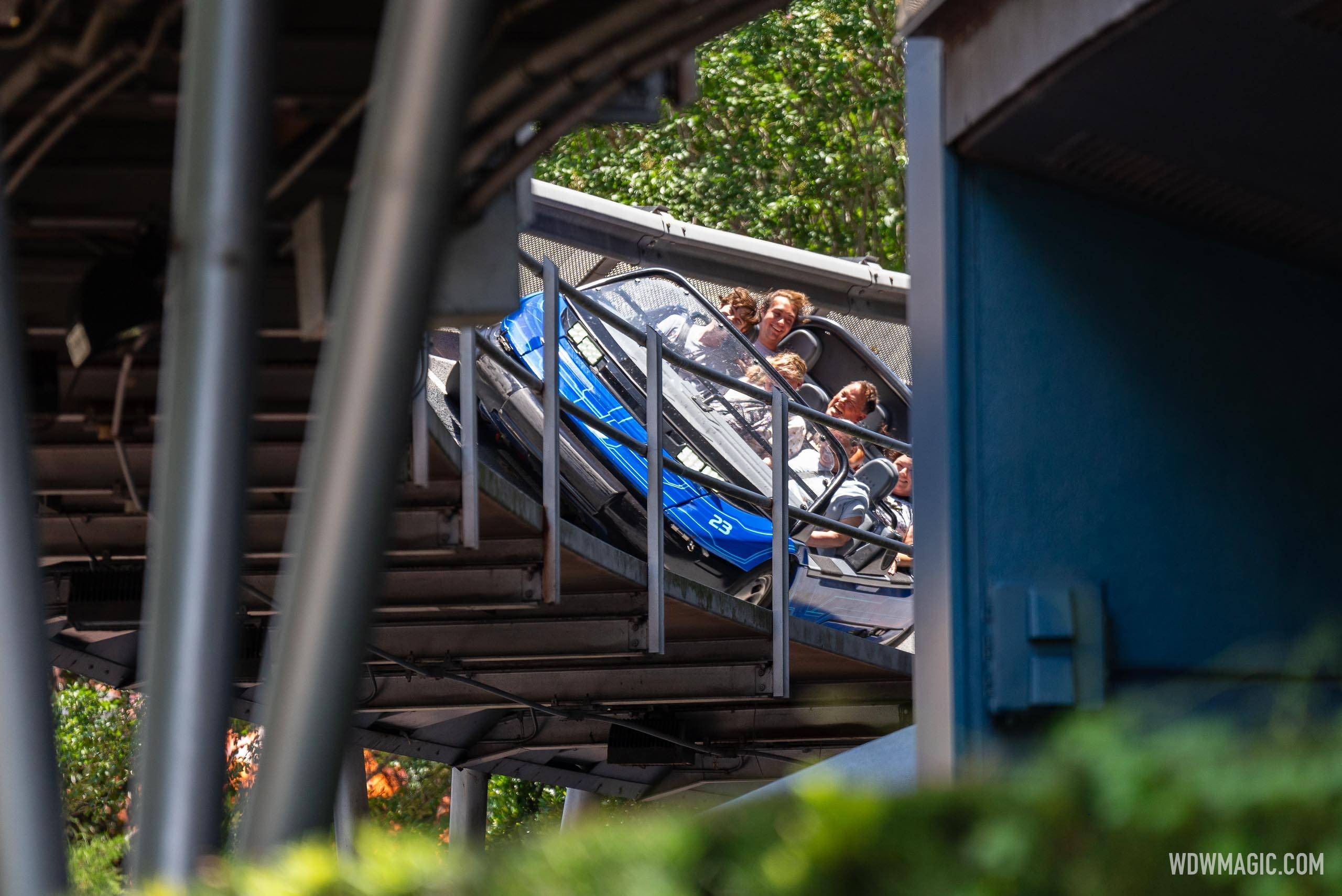
Test Track’s sponsored nature also reinforced Epcot’s connection to real-world innovation and industry. The partnership with General Motors (and later Chevrolet) allowed Disney to showcase actual automotive technology and design processes, maintaining the park’s commitment to showcasing cutting-edge advancements. This corporate sponsorship model, while not unique to Test Track, became increasingly important for Epcot as it helped to fund major attractions while keeping them current and relevant.
The 2012 reimagining of Test Track further emphasized the ride’s impact on Epcot’s evolution. By incorporating interactive elements in the queue and pre-show areas, Test Track 2.0 aligned with Disney’s broader push towards more immersive and personalized guest experiences. The ability for guests to design their own vehicles and then test them on the ride was a novel concept that increased repeat ridership and engagement.
Moreover, Test Track’s longevity – spanning over two decades with two major iterations – speaks to its enduring appeal and adaptability. Few attractions at Disney World have managed to remain relevant and popular for so long, especially while undergoing such significant changes. This adaptability has made Test Track a model for how classic attractions can be updated to meet changing guest expectations and technological capabilities without losing their core appeal.
Behind the Scenes: The Technology and Challenges of Test Track
The development and operation of Test Track involved numerous technological innovations and challenges. One of the most significant hurdles was creating a ride system that could simulate the experience of being in a test car while safely accommodating thousands of guests each day.
The ride vehicles themselves were a marvel of engineering. While they appeared to be driving freely on a road, they were actually connected to a hidden guide rail beneath the surface. This allowed for precise control of the vehicle’s movement while maintaining the illusion of a real car drive. The vehicles were equipped with onboard computers that controlled their speed and timing, ensuring smooth operation and allowing for the near-miss effects that were crucial to the ride’s thrill factor.
The tires used on the Test Track vehicles presented a unique challenge. Standard automotive tires couldn’t withstand the extreme wear and tear of constant operation, sometimes running up to 140 miles per day. Disney partnered with Goodyear to develop custom tires with extra thick rubber, capable of enduring the rigorous demands of the attraction. This collaboration between Disney and a major tire manufacturer showcased the level of specialized engineering required to bring Test Track to life.
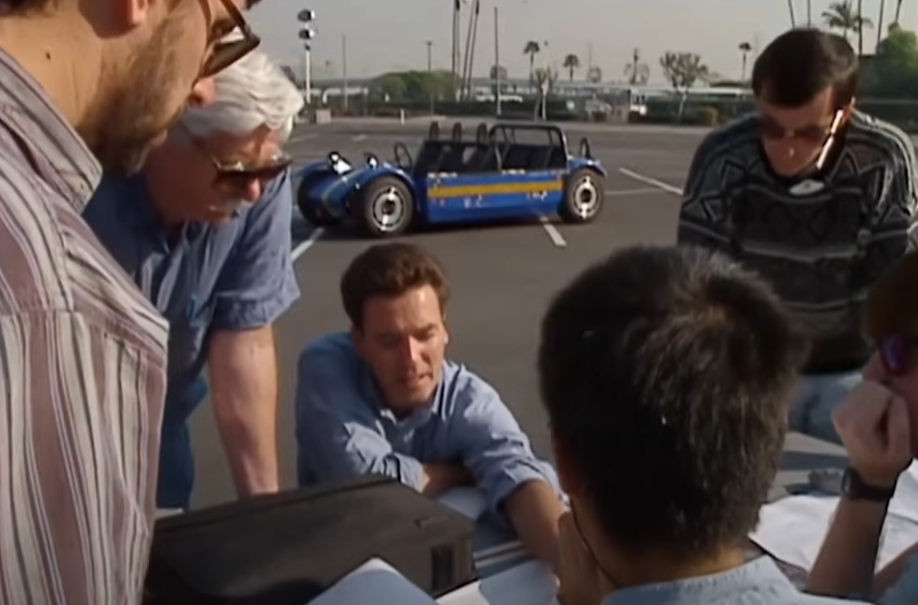
The ride’s computer system was another major technological hurdle. The original system, designed to control multiple vehicles simultaneously, proved inadequate for the ride’s needs. Disney had to scrap the initial program and build a new one from the ground up, causing significant delays in the ride’s opening. This new system had to coordinate the movement of up to 29 vehicles at once, ensuring precise timing for safety and optimal guest experience.
Test Track’s outdoor portion presented its own set of challenges. Exposed to the elements, this section required careful design to operate safely in various weather conditions, including Florida’s frequent rainstorms. The banked turns and high speeds of this section also necessitated extra safety precautions to keep guests secure while maintaining the thrilling sensation of a high-speed test drive.
The 2012 redesign brought new technological elements to the forefront. The interactive design stations in the queue area had to be user-friendly enough for guests of all ages to operate quickly, while still offering meaningful customization options. The system that transferred guest-designed vehicles from these kiosks to the ride itself required seamless integration between the pre-show area and the ride system.
Throughout its operation, Test Track has undergone numerous behind-the-scenes updates and refinements. Regular maintenance is crucial for a high-speed attraction of this nature, with cast members performing daily checks and more extensive periodic refurbishments to ensure all systems are functioning correctly. The complexity of Test Track’s systems means that when technical issues do arise, they can sometimes lead to extended downtime, a challenge that Disney has worked continuously to minimize.
The Cultural Impact and Guest Reactions to Test Track
Since its inception, Test Track has left an indelible mark on Disney World culture and guest experiences. The ride quickly became a fan favorite, often cited as a must-do attraction for visitors to Epcot. Its popularity led to consistently long wait times, making it one of the most sought-after FastPass (and later, FastPass+) selections in the park.
Guest reactions to Test Track have been overwhelmingly positive throughout its run. Many visitors, particularly those who experienced both versions, have noted how the ride manages to balance educational content with pure thrills. The pre-show areas of both versions have been praised for setting up the ride experience effectively, building anticipation while providing interesting information about automotive design and testing.
The high-speed outdoor section of the ride has been a particular highlight for many guests. The sudden burst of speed and the feeling of the wind rushing past have created memorable moments for countless visitors. Many riders report a surge of adrenaline during this part of the attraction, with some comparing it favorably to traditional roller coasters.
Test Track’s theming has also been a subject of much discussion among Disney fans. The original version’s realistic test facility atmosphere was appreciated for its attention to detail and immersive quality. The 2012 redesign, with its TRON-like aesthetic, initially received mixed reactions. Some guests missed the more grounded feel of the original, while others appreciated the futuristic look as a better fit for Epcot’s forward-looking ethos. Over time, most guests came to embrace the new design, particularly appreciating the added interactivity of the pre-show area.
The ride has also had a significant impact on Disney merchandise. Test Track-themed clothing, toys, and other souvenirs have been popular items in Epcot gift shops. The attraction’s iconic logo and sleek car designs have adorned everything from t-shirts to die-cast model cars, allowing guests to take a piece of the experience home with them.
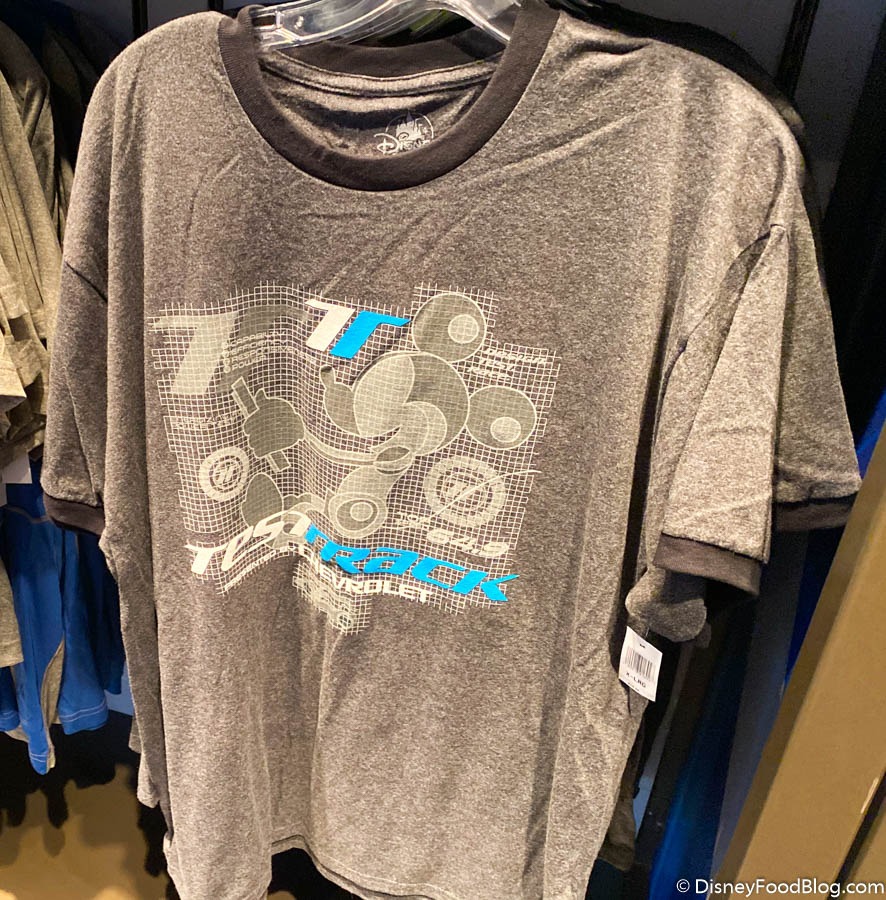
In the broader context of theme park attractions, Test Track has been influential in demonstrating how a sponsored ride can successfully blend corporate branding with Disney storytelling. It’s often cited as an example of how educational content can be made exciting and accessible to a wide audience.
The ride has also played a role in inspiring young visitors. Many guests, particularly children, have reported increased interest in automotive design and engineering after experiencing Test Track. The interactive design elements introduced in the 2012 version have been particularly effective in this regard, allowing guests to engage with car design concepts in a hands-on way.
The Future of Test Track and Its Legacy
As Test Track 2.0 approached its final days of operation in June 2024, speculation is rife about what the next iteration of this popular attraction might entail. While Disney has been tight-lipped about specific details, they have released concept art suggesting that Chevrolet will remain the ride’s sponsor. The artwork also shows the removal of the iconic canopy at the ride’s entrance, replaced by a round roof covering the line entrances.
This upcoming refurbishment coincides with the completion of Epcot’s massive reimagining project, which has transformed the former Future World into three distinct neighborhoods: World Celebration, World Discovery, and World Nature. The timing of Test Track’s closure seems strategic, allowing Disney to update one of its flagship attractions to better align with the newly redesigned park.
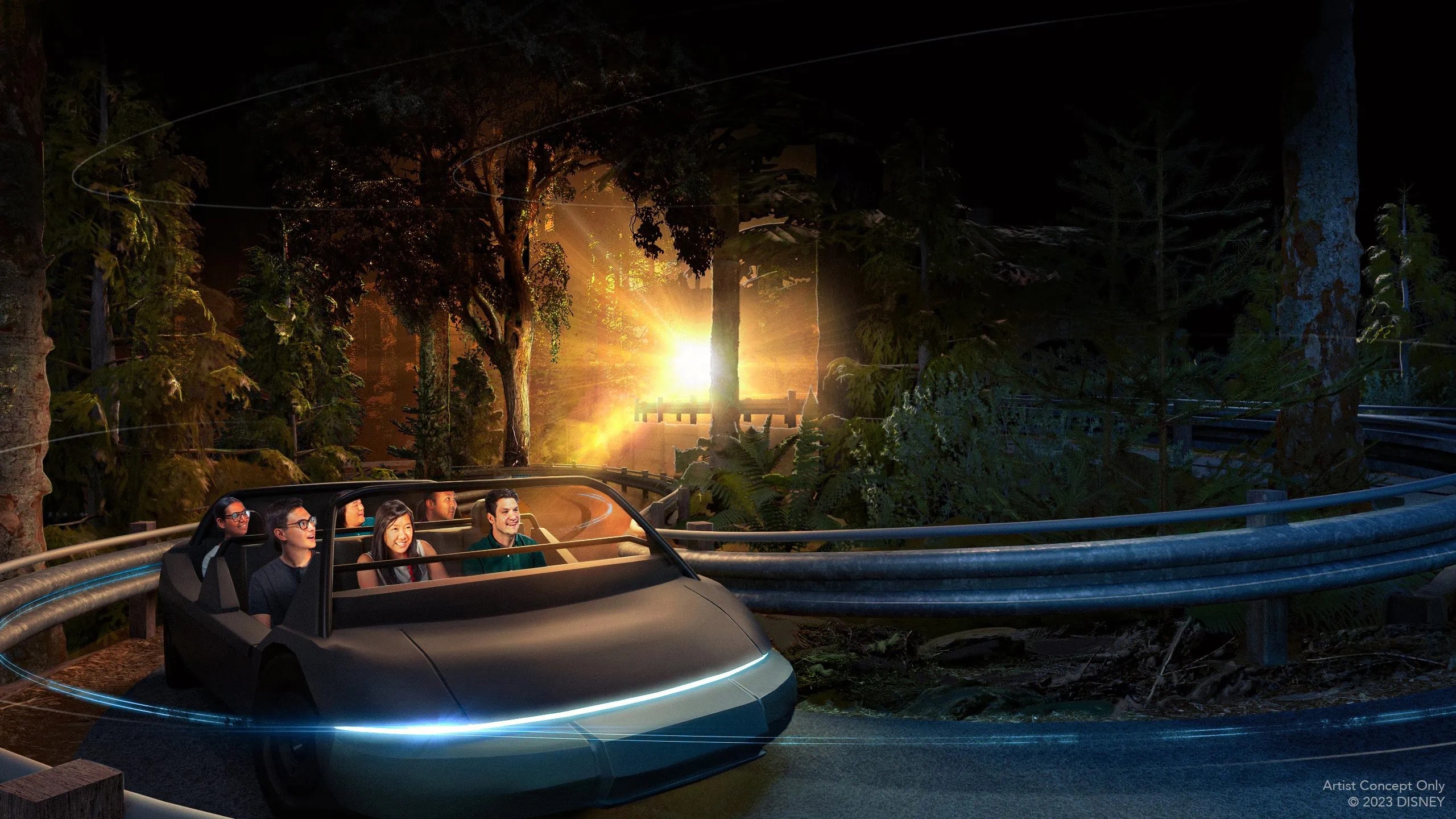
While the exact nature of the changes remains unknown, it’s likely that the ride system and overall layout will remain largely the same. Given Disney’s recent focus on incorporating IP (Intellectual Property) into their attractions, some fans speculate that the new version might lean even more heavily into the TRON aesthetic, creating a stronger thematic link with the TRON Lightcycle Power Run attraction at Magic Kingdom.
Regardless of the specific changes, Test Track’s enduring popularity virtually guarantees its continued presence at Epcot. The attraction has become a cornerstone of the park, balancing thrills with the educational aspect that has long been a hallmark of Epcot’s identity.
Looking back, Test Track’s legacy is multi-faceted. It marked a significant shift in Epcot’s attraction lineup, introducing high-speed thrills to a park previously known for slower, more educational experiences. It demonstrated how corporate sponsorships could be seamlessly integrated into Disney storytelling, creating an experience that was both entertaining and informative. The ride’s ability to evolve and adapt, as seen in its 2012 reimagining, showcases Disney’s commitment to keeping its attractions fresh and relevant.
Perhaps most importantly, Test Track has inspired countless guests, young and old, to think about automotive design, engineering, and safety in new ways. By making these complex topics accessible and exciting, the ride has potentially influenced career choices and sparked interests that extend far beyond the parks.
As Epcot continues to evolve, Test Track stands as a testament to the park’s original mission of entertaining, educating, and inspiring guests. Whatever form the attraction takes in its next iteration, it’s sure to continue pushing the boundaries of theme park experiences, just as it has done for the past quarter-century.
The longevity of Test Track – spanning multiple decades and soon to enter its third major version – is a rarity in the theme park world. It speaks to the ride’s enduring appeal and its ability to adapt to changing technologies and guest expectations. As we look to the future, one thing is certain: Test Track will continue to be a key part of the Epcot experience, thrilling and inspiring guests for years to come.


